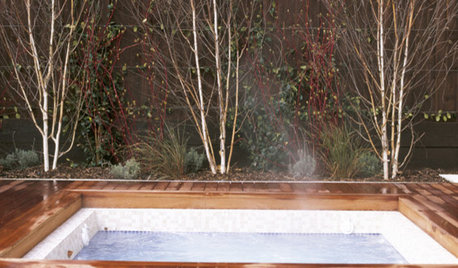Bonide just came out with a new fruit tree spray?
ljkewlj
10 years ago
Related Stories

EDIBLE GARDENSHow to Grow 10 Favorite Fruit Trees at Home
Plant a mini orchard in fall, winter or early spring to enjoy fresh-off-the-tree fruit the following year
Full Story
FARM YOUR YARDIf You Have Room for Only One Fruit Tree ...
Juice up a small garden with one of these easier-care or worth-the-effort fruit trees for a mild climate
Full Story
EDIBLE GARDENSGrow Plum Hybrids for Your Favorite Fruit Flavors
Plums are cozying up with apricots, peaches and even cherries — here’s how to grow these hybrids for the best aspects of each
Full Story
MOST POPULARHow to Get Rid of Those Pesky Summer Fruit Flies
Learn what fruit flies are, how to prevent them and how to get rid of them in your home
Full Story
GARDENING GUIDESGreat Design Plant: Grow Blueberries for Their Fruit and More
Eastern gardeners should consider growing blueberry plants for their delicious fruits, bee-friendly spring blooms and brilliant fall foliage
Full Story
ENTERTAININGEye-Catching Centerpieces Beyond Flowers and Fruit
Use your imagination to create a tableau that reflects your surroundings, creates dramatic tension or elicits surprise
Full Story
EDIBLE GARDENSHow to Add an Apple Tree to Your Edible Garden
Readily available, beautiful and fragrant, apple trees offer four-season interest along with crisp, juicy fruit
Full Story
GARDENING GUIDESHow to Keep Your Citrus Trees Well Fed and Healthy
Ripe for some citrus fertilizer know-how? This mini guide will help your lemon, orange and grapefruit trees flourish
Full Story
EDIBLE GARDENSHow to Grow Your Own Peaches and Nectarines
Make gardening a little sweeter with these juicy fruits, which you can eat after plucking or preserve for later
Full Story
DREAM SPACESJust a Few Things for the Dream-Home Wish List
A sunken hot tub, dedicated game room, tree house, hidden wine cellar and more. Which of these home luxuries would you like best?
Full StoryMore Discussions








drew51 SE MI Z5b/6a
alan haigh
Related Professionals
Windham Landscape Architects & Landscape Designers · Benbrook Landscape Architects & Landscape Designers · Sand Springs Landscape Architects & Landscape Designers · Suffern Landscape Architects & Landscape Designers · Vernon Hills Landscape Architects & Landscape Designers · Bloomington Landscape Contractors · Dunwoody Landscape Contractors · Gallatin Landscape Contractors · Indio Landscape Contractors · Marlborough Landscape Contractors · North Canton Landscape Contractors · Waldorf Landscape Contractors · Wayland Landscape Contractors · Yukon Landscape Contractors · Chicago Ridge Landscape Contractorsolpea
olpea
ltilton
Chris-7b-GA
alan haigh
mrsg47
ltilton
ltilton
alan haigh
ltilton